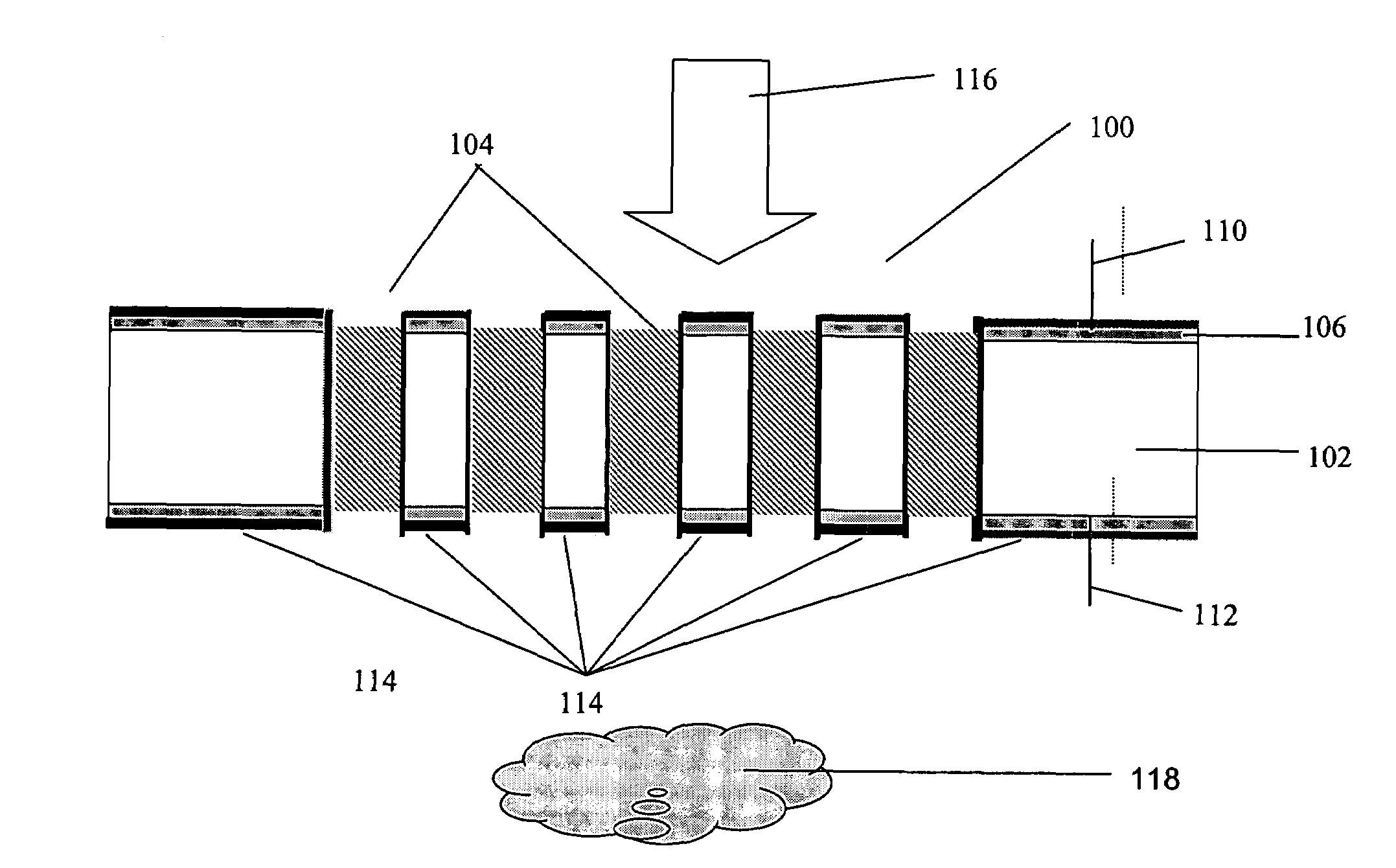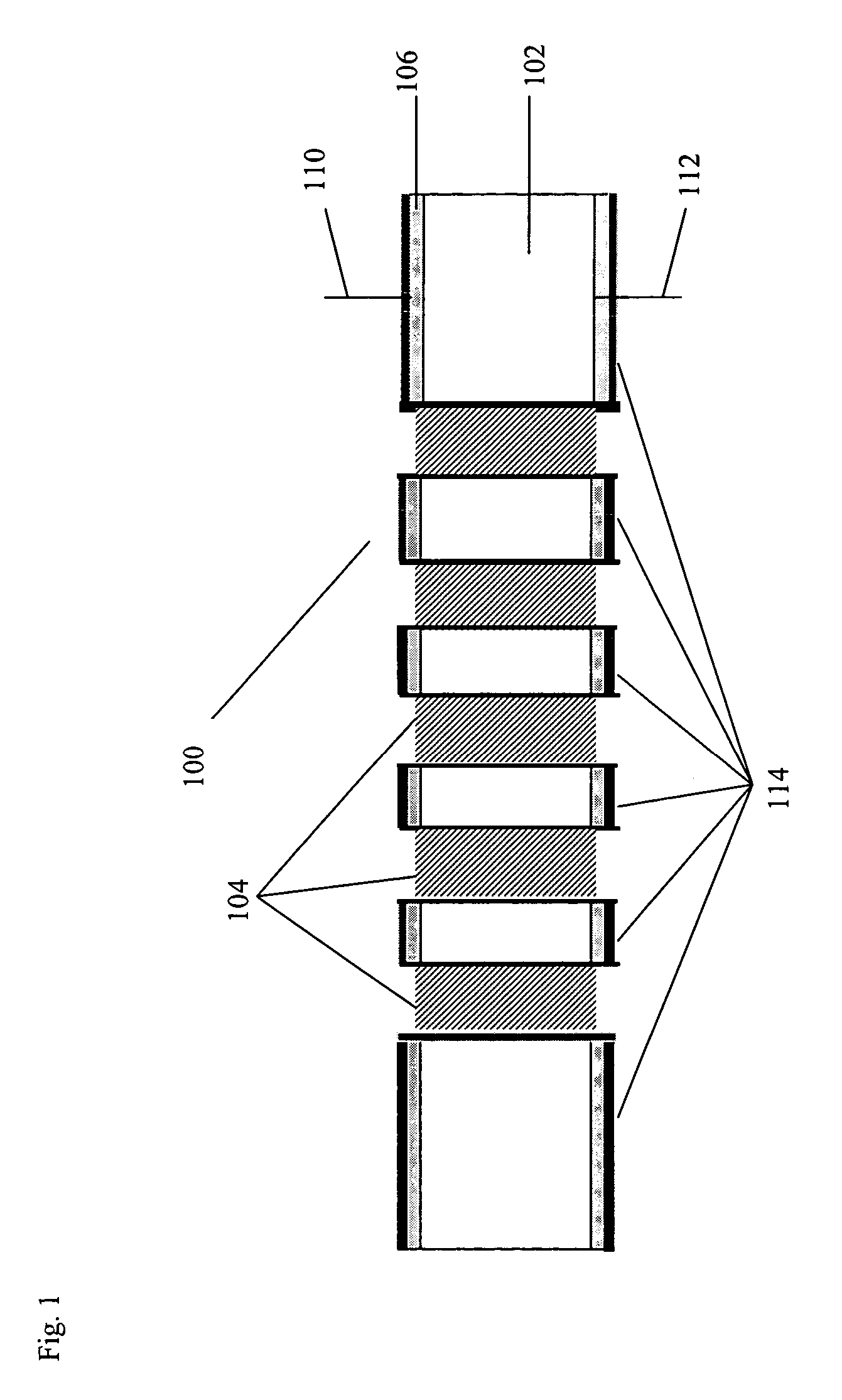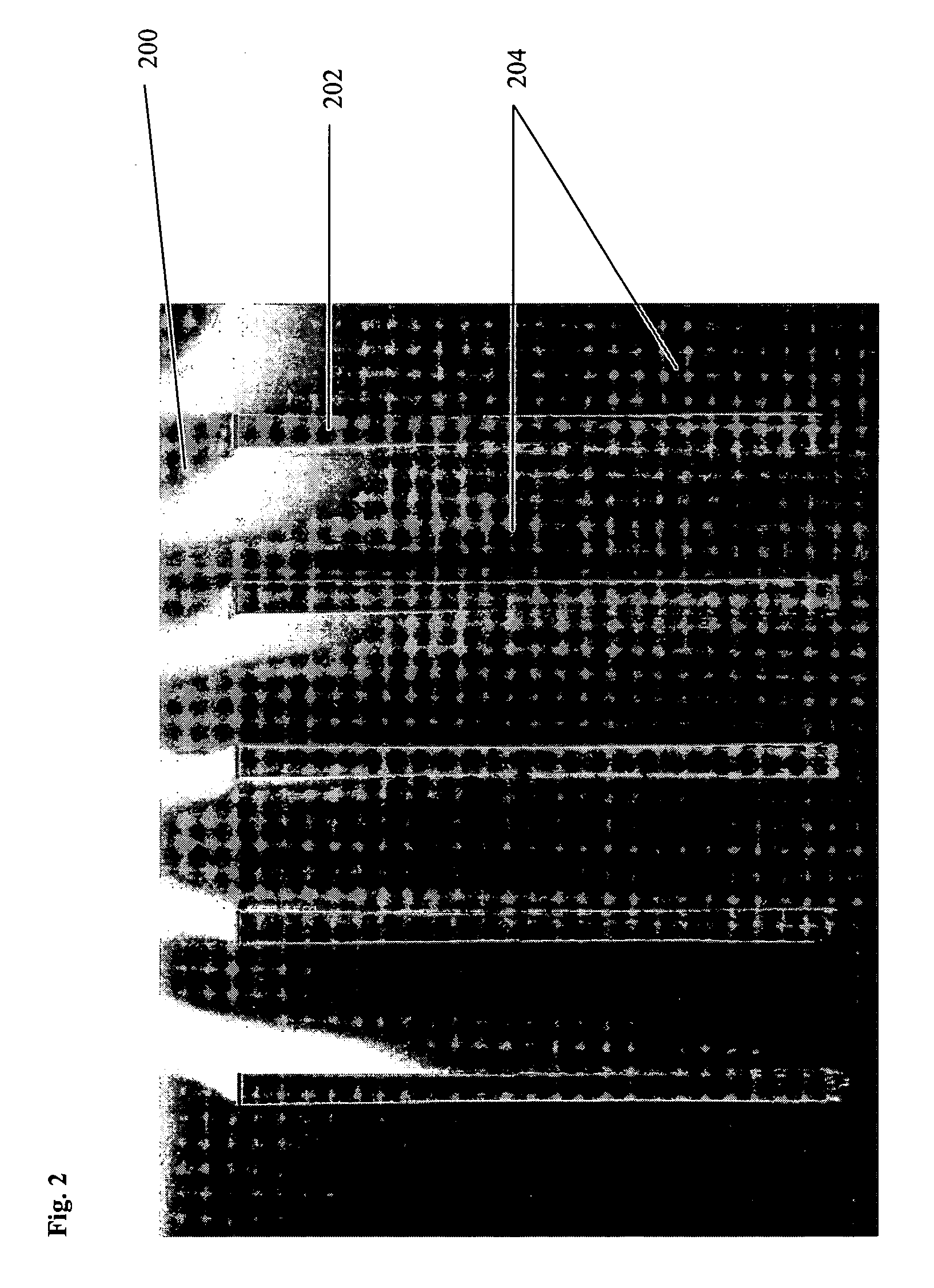3D miniature preconcentrator and inlet sample heater
a preconcentrator and sample heater technology, applied in the direction of component separation, withdrawal sample device, material testing goods, etc., can solve the problems of low surface area to volume ratio of preconcentrator, inability of analytical instruments to detect molecules in such low concentrations, and long time-consuming to accumulate sufficient quantities of analyte, etc., to achieve low thermal mass and large surface area
- Summary
- Abstract
- Description
- Claims
- Application Information
AI Technical Summary
Benefits of technology
Problems solved by technology
Method used
Image
Examples
Embodiment Construction
[0029]Reference will now be made in detail to the preferred embodiments of the present invention, examples of which are illustrated in the accompanying drawings. FIG. 1 is a cross-sectional diagram of a preconcentrator 100 according to an embodiment of the present invention. The preconcentrator 100 includes a substrate 102, illustratively, a rectangular parallelipiped, with passageways 104 running between top and bottom major surfaces, a conductive material 106 covering the top and bottom major surface, except for the passageways, a top electrical lead 110, a bottom electrical lead 112, and an adsorbent coating 114 on the outer surfaces of electrical leads 110, 112. Top electrical lead 110 is connected to conductive material 106 on the top side of the substrate. Bottom electrical lead 112 is connected to conductive material 106 on the bottom side of the substrate. Electrical leads 110, 112 provide for passage of current through the conductive material and substrate so that the entir...
PUM
 Login to View More
Login to View More Abstract
Description
Claims
Application Information
 Login to View More
Login to View More - R&D
- Intellectual Property
- Life Sciences
- Materials
- Tech Scout
- Unparalleled Data Quality
- Higher Quality Content
- 60% Fewer Hallucinations
Browse by: Latest US Patents, China's latest patents, Technical Efficacy Thesaurus, Application Domain, Technology Topic, Popular Technical Reports.
© 2025 PatSnap. All rights reserved.Legal|Privacy policy|Modern Slavery Act Transparency Statement|Sitemap|About US| Contact US: help@patsnap.com



